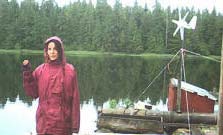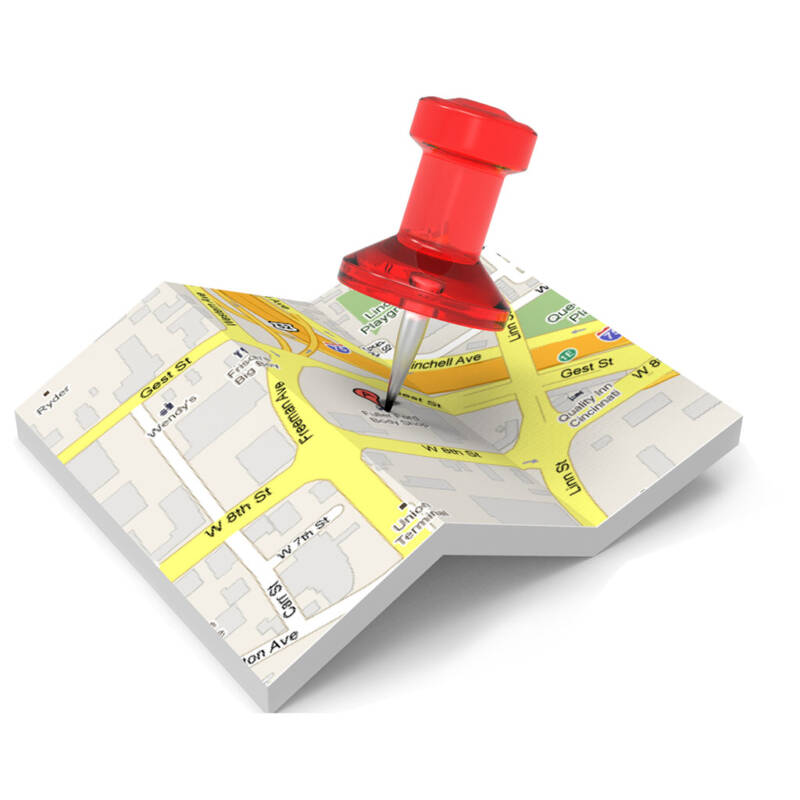
Island Mel
Off-Grid welcomes Melissa Chapple, who will contribute articles and an island diary from her remote location:
My husband and I live off-the-grid on a tiny island in Southeast Alaska. We had lived for many years on a float house – which is a real house built on a large log raft, anchored in a protected bay. It seemed stable but would move gently about. Occasionally a relaxed guest would jump in fright as the view through the window would drift sleepily to one side. The winter storms got a bit much, so recently we slid the house off the float and on to a small island nearby.
We take a skiff if we want to get into town, or if we want to go over to the nearest island for a walk. Our skiff is more important than our car; we need it for fishing, for hunting on remote islands, or for gathering kelp. People seem to feel sorry for us living on an island, and occasionally I have second thoughts about it in winter when the waves are splashing over the side and freezing rain stings my eyes so much that I can barely see where I am going. But there are lots of compensations – northern lights when coming home in the dark (they sure beat street lights!) a full moon shimmering over fresh snow, winter sunrises bursting over the mountains, and the chance to watch nature change every day. Give me a skiff over a heated garage any day!
Prince of Wales Island is located right at the bottom of the southeastern pan handle of Alaska. To get there, you have to fly from Seattle to Ketchikan. From Ketchikan you can fly on a float plane or take a three hour ferry trip.
We have solar, wind and a small generator with battery pack for power. We collect rainwater and our water is heated by a woodstove – no hot water in summer! We hunt, fish and home can our food. I hope to do more gardening next summer and try to produce more of our food that way. It is a work in progress.
We have a canoe and a kayak – perfect for exploring the islands, inlets and hidden rivers. We can even use them to paddle into town, we will still have transport if we ever can’t buy gasoline. I don’t walk the dogs – I kayak and they run around on the beach near me. They are tough Alaskan dogs, running and jumping across all sorts of terrain, even swimming between islands in very cold water.
Solar and wind power charges our batteries which powers the lights and a boom box for music (to save power we use a boom box, not a regular stereo – low wattage – and 12 volt florescent bulbs). We have a second set of lights wired for 120 volts that we use if we turn on the generator – the generator charges the batteries if they are low, and gives us extra power in winter for watching movies etc. We have a propane range and fridge, and a woodstove heats the house and makes hot water. We are moving up in the world though. Now we have a tiny super quiet generator, (that I think I almost love because it is so quiet), a front loader washing machine (less water and detergent, but it needs the bigger generator) cell phone internet and satellite radio. We don’t want TV, but the addition of the internet and music into our lives has been a real delight!
Summer is a busy time working and collecting food. We don’t really buy any meat from the store. From spring we fish and summer and autumn is hunting time! We can provide enough meat for the rest of the year this way. We eat king salmon, ling cod and halibut and venison. We could hunt for ducks and geese, but haven’t gotten to that yet. Oh, yes, there are also mussels, clams and sea cucumbers for those who like it squishy. Meat is frozen, smoked or canned.
We can up as much food as possible for the rest of the year. This consists of pressure cooking it in glass jars so it can last for a long time. Canning is hard but enjoyable work, and it is a wonderful feeling to be able to walk into your pantry and admire all the sparkling jars of home canned meat, fish, kelp, pickles and fruits and jams. Pure and healthy, only the best ingredients.
The wilderness can provide so much! Imagine great fields of sea asparagus revealed by the low tide, healthy, vibrant green, being tousled gently by the wind. Sea asparagus looks just like regular asparagus only scaled down. It grows on shallow flood plains that are covered by the ocean at high tide and dry at low. You can just walk through and collect bucketfuls with ease. Substitute for beans or any greens in any dish. We pickle it and can it to keep it for winter. We do the same for different types of kelp which can be dried also. And then there are a million different varieties of forest mushrooms in an incredible range of colors, shapes and patterns, berries, fiddlehead ferns for pesto and a bunches of other strange and wonderful local delicacies. There is so much to do and learn!
Auto Amazon Links: No products found.

2 Responses
What BS..She’s gone to New Zealand after a mere 2 years of remote living with her husband who did all the work.
Sounds like a nice life, I’d like to read more , how can I get to the “island diary”?